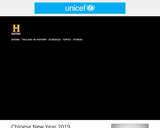
This resource tells the history of Chinese New Year and how it is celebrated.
- Subject:
- Social Studies
- Material Type:
- Demonstration
- Provider:
- History
- Date Added:
- 01/20/2017

This resource tells the history of Chinese New Year and how it is celebrated.
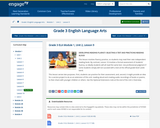
In this lesson, students choose a text of interest to them and demonstrate fluency when reading stories or poems for an audio recording.

In this minilesson, students explore the use of dialogue tags such as “he said” or “she answered” in picture books and novels, discussing their purpose, form, and style. Students identify dialogue tags in stories, collaboratively revise a passage from a novel to add more variety to the tags, and then apply the text structure to stories that they have written.
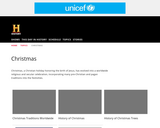
This resource include videos which tells the history of Christmas and how it is celebrated.

In this Bright Hub Education downloadable workbook for A Christmas Carol by Charles Dickens, students will discover questions for each part of the novel, a tie in to one of the film adaptations, a writing assignment, and an objective test that can be turned in the day before the holiday break.

In this lesson, students will research a variety of chromosomal abnormalities and resulting syndromes to determine risk factors and contributors of the abnormality, and characteristics of the syndromes.

In this unit, students learn that effective citizens are committed to protecting rights for themselves, other citizens, and future generations, by upholding their civic responsibilities and are aware of the potential consequences of inaction. Students also learn distinctions between a citizen's rights, responsibilities, and priviledges help to define the requirements and limits of personal freedom.

In this Penguin Classics guide to Augustine of Hippo's book City of God, students will learn the background of the book as well as the author, and deepen their understanding of the text through indepth discussion questions. Supplemental texts are suggested.

This resource includes a lesson designed to assist students with performing a close reading. Students will read “The Crisis, No. 1” and annotate the text. Afterwards, students will evaluate claims using textual evidence. Finally, students will work with their peers to write short arguments.

This resource includes a lesson designed to assist learners with reading and annotating a text. Students will view a presentation on ethos, pathos and logos before reading selections. Afterwards, students will work collaboratively to complete a graphic organizer designed to assist them with analyzing appeals within the speeches.
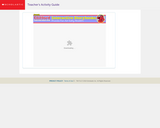
In this interactive, students will help Clifford sort letters by matching the first letter in each word to the correct box.

In this lesson, students investigate climate change and search for and evaluate evidence of change. Students will then write a scientific argument using evidence and reasoning to support claims. Students will also be able to reflect on the weaknesses in their own arguments in order to improve their argument and then respond to other arguments.

In this lesson, students read about how climate changes in the American Southwest affected the lives of the Anasazi people and impacted their civilization. A set of discussion questions is provided. In an associated activity, students research other ancient civilizations and compare them to the Anasazi.
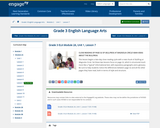
In this lesson, students This lesson begins a two-day close reading cycle with a new chunk of Bullfrog at Magnolia Circle. Yet these two lessons focus on page 32, which is structured much more like a "typical" informational text, with expository paragraphs and a glossary.
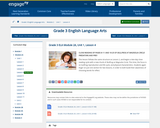
This lesson follows the same structure as Lesson 2, and begins a two-day close reading cycle with a new chunk of Bullfrog at Magnolia Circle. This time, the focus is on bullfrog reproduction and life cycle, and physical characteristics. Students again linger on just one section for two lessons, in order to both build their awareness of choosing words for effect.
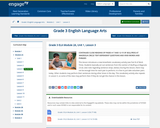
This lesson introduces a new kinesthetic vocabulary activity (see Part B of Work Time). Students basically act out sentences from this section of Bullfrog at Magnolia Circle.
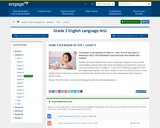
In this lesson, students continue close reading of pages 8-11 and 16-25 of Bullfrog at Magnolia Circle.
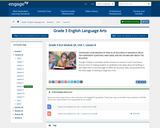
This lesson focuses on helping students to synthesize main ideas about the bullfrog. It also helps them to see how page 32 differs (in structure, style, and purpose) from the other pages of Bullfrog at Magnolia Circle.

This resource provides a close reading lesson of The Gospel of Wealth. Learners will spend time deconstructing the text by performing multiple reads.

This resource provides a lesson which is designed to provide students with the opportunity to perform a close reading of a text. Students will respond to the provided text dependent questions, outline the text, and complete a comparitive essay.